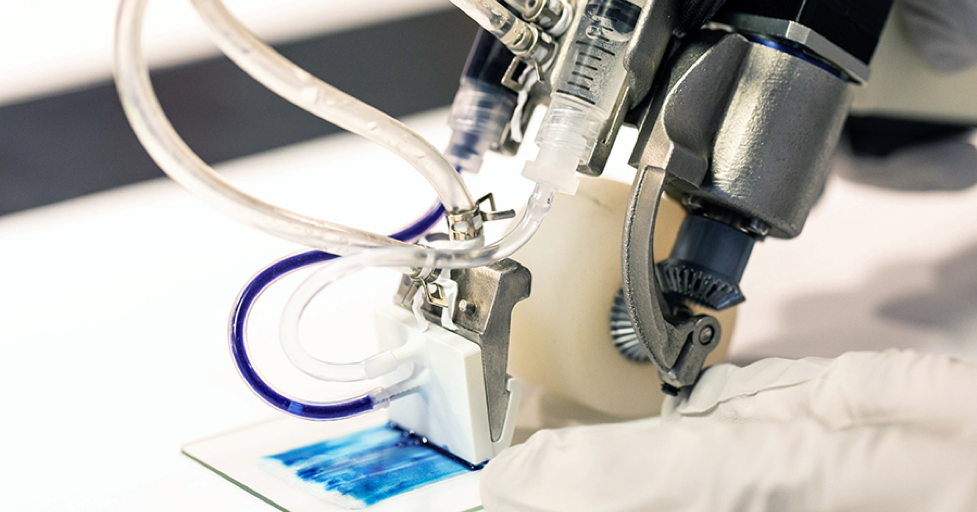Handheld 3-D skin printer accelerates healing process for burns, research shows
A team of researchers at U of T Engineering and Sunnybrook Health Sciences Centre have successfully demonstrated their handheld 3-D printer can deposit sheets of skin to cover large burn wounds, and that its “bio ink” can accelerate the healing process.
To cover a large burn, the handheld 3-D skin printer is used like a paint roller: covering an area with a uniform sheet of biomaterial, stripe by stripe. The ink itself is comprised of mesenchymal stroma cells (MSCs) — stem cells that differentiate into specialized cell types depending on its environment. In this case, it promotes skin regeneration and reduction in scarring.
The project is led by the University of Toronto’s (U of T) Richard Cheng and Axel Guenther, with deep collaboration with Dr. Marc Jeschke, director of the Ross Tilley Burn Centre, and his team at Sunnybrook. Their successful in-vivo trials on full-thickness wounds were documented in Biofabrication.
Dr. Jeschke believes the handheld skin printer could be seen in a clinical setting within the next five years. “Once it’s used in an operating room, I think this printer will be a game changer in saving lives. With a device like this, it could change the entirety of how we practice burn and trauma care.”






